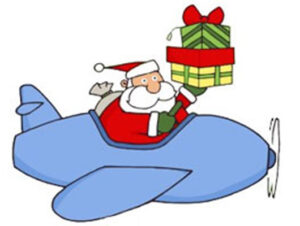
Our 2024 Chapter 1541 Holiday Party is set for Wednesday, December 11, at BJs Restaurant in Roseville (on Roseville Parkway kitty-corner across from the Galleria). We are making a special effort this year to keep the cost as low as possible so we can include more families. Tickets are $40 for adults and $15 for kids under the age of 12. The meal will be a pizza buffet with a specialty entrée (either roasted chicken breast or a BJ’s specialty pasta), salad and non-alcoholic drinks. There is also a no-host bar available at BJs.

Our party will be an informal social gathering beginning at 6:00 pm and lasting until 8:00 pm. Our program will include presentation of the 2024 EAA Recognition Awards to chapter volunteers, and we will have some fun including an Ugly Sweater Contest — please come dressed for success!
This year we are adopting a “Helping Others for the Holidays” theme at our event. For this we are asking attendees to bring either a canned food item for The Salt Mine charity in Lincoln, or a new unwrapped toy to donate to Toys for Tots in Lincoln. Add a little of the joy of serving others to your holiday menu!
The Salt Mine staff tell us that nonperishable food items with protein are much needed, such as canned tuna, tuna lunch packs, canned chili or protein bars. They also need canned fruit during the cold months.
Toys for Tots suggests new, unwrapped toys such as sporting equipment, balls, and bags, books, backpacks, board games or handheld electronics.
If you’d prefer to just make a donation at the party, we’ll have scannable QR codes that go to those organizations’ donation pages.
Or you can just enjoy the good food, fellowship and fun without making any donation! It’s all good!
Tickets must be purchased ahead of time; they will not be available at the door of the event. The firm deadline for ticket purchase is Saturday, December 7.
To keep the dinner ticket prices as low as possible, we are selling them at pretty close to cost, so the dinner itself is not a fundraiser for the chapter. Tickets purchased online will be “will-call” by name at the door at the event.
Please plan on joining us for the evening of Wednesday, December 11.

 On Saturday, November 9th, we will be having our Second Saturday Pancake Breakfast from 8:00 to 10:00 a.m. at the EAA hangar, S-12 at the Lincoln Regional Airport. If you are not familiar with the airport, navigate to Flight Line Drive and follow the “EAA” signs. All are welcome.
On Saturday, November 9th, we will be having our Second Saturday Pancake Breakfast from 8:00 to 10:00 a.m. at the EAA hangar, S-12 at the Lincoln Regional Airport. If you are not familiar with the airport, navigate to Flight Line Drive and follow the “EAA” signs. All are welcome.
 of aerial survey that quantifies emissions at land fills, oil & gas facilities, pipelines, dairies, etc., and collects air samples for agencies such as the National Oceanographic and Atmospheric Administration (NOAA) and the California Air Resources Board.
of aerial survey that quantifies emissions at land fills, oil & gas facilities, pipelines, dairies, etc., and collects air samples for agencies such as the National Oceanographic and Atmospheric Administration (NOAA) and the California Air Resources Board.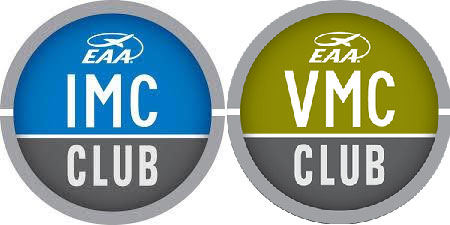 This pilot education meeting will have two “What Would You Do?” scenarios. The IMC
This pilot education meeting will have two “What Would You Do?” scenarios. The IMC On Saturday, October 12th, we will be having our Second Saturday Pancake Breakfast from 8:00 to 10:00 a.m. at the EAA hangar, S-12 at the Lincoln Regional Airport. If you are not familiar with the airport, navigate to Flight Line Drive and follow the “EAA” signs. All are welcome.
On Saturday, October 12th, we will be having our Second Saturday Pancake Breakfast from 8:00 to 10:00 a.m. at the EAA hangar, S-12 at the Lincoln Regional Airport. If you are not familiar with the airport, navigate to Flight Line Drive and follow the “EAA” signs. All are welcome. Mike has the distinction of owning the only airworthy PT-21 left in the world, and flies formation with Will’s PT-22 when Will’s airline pilot day job permits. Both World War II trainer aircraft are hangared at Lincoln, and will be present just outside the EAA hangar on Saturday, October 12th starting at 0930. The Ryans were built in San Diego and colloquially known as “Maytag Messerschmitts” by the cadets in training because of the distinctive sound of their 5 cylinder radial engines. [You can hear the sound of those engines
Mike has the distinction of owning the only airworthy PT-21 left in the world, and flies formation with Will’s PT-22 when Will’s airline pilot day job permits. Both World War II trainer aircraft are hangared at Lincoln, and will be present just outside the EAA hangar on Saturday, October 12th starting at 0930. The Ryans were built in San Diego and colloquially known as “Maytag Messerschmitts” by the cadets in training because of the distinctive sound of their 5 cylinder radial engines. [You can hear the sound of those engines  This pilot education meeting will have three components. First, CFII Scott Thompson will give a talk for both IFR and VFR pilots on the functioning of Precision Approach Path Indicator (PAPI) lights and how they contribute to improved landing safety.
This pilot education meeting will have three components. First, CFII Scott Thompson will give a talk for both IFR and VFR pilots on the functioning of Precision Approach Path Indicator (PAPI) lights and how they contribute to improved landing safety. At 9:30 we will have a presentation entitled “Go Fast, Turn Left. Flying the 2024 EAA AirVenture Cup Race” by chapter member Mark Rieger, who is going to fly his personally hand crafted Cozy Mark IV race plane in for all to see, and tell us about his experience as a rookie race pilot at Oshkosh 2024. (Spoiler Alert: Top Five finish!)
At 9:30 we will have a presentation entitled “Go Fast, Turn Left. Flying the 2024 EAA AirVenture Cup Race” by chapter member Mark Rieger, who is going to fly his personally hand crafted Cozy Mark IV race plane in for all to see, and tell us about his experience as a rookie race pilot at Oshkosh 2024. (Spoiler Alert: Top Five finish!)
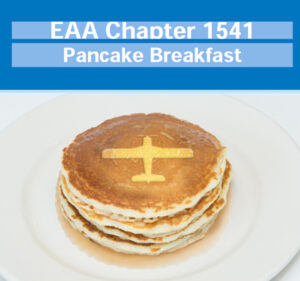 On Saturday, August 10th, we will be having our Second Saturday Pancake Breakfast from 8:00 to 10:00 a.m. at the EAA hangar, S-12 at the Lincoln Regional Airport. If you are not familiar with the airport, navigate to Flight Line Drive and follow the “EAA” signs. All are welcome.
On Saturday, August 10th, we will be having our Second Saturday Pancake Breakfast from 8:00 to 10:00 a.m. at the EAA hangar, S-12 at the Lincoln Regional Airport. If you are not familiar with the airport, navigate to Flight Line Drive and follow the “EAA” signs. All are welcome.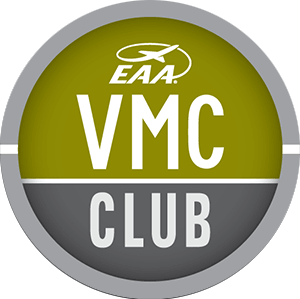
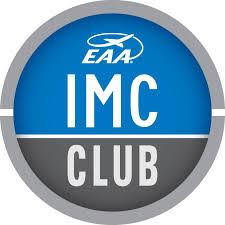 Our monthly pilot education meeting for August will have two “What Would You Do?” scenarios. The IMC scenario involves an IFR flight in busy airspace where the cabin door opens and the change overwhelms the autopilots ability to maintain altitude and heading. The VMC scenario involves an engine fire in a twin engine aircraft. Meeting participants will be asked to use their expertise and experience to solve these sudden inflight challenges.
Our monthly pilot education meeting for August will have two “What Would You Do?” scenarios. The IMC scenario involves an IFR flight in busy airspace where the cabin door opens and the change overwhelms the autopilots ability to maintain altitude and heading. The VMC scenario involves an engine fire in a twin engine aircraft. Meeting participants will be asked to use their expertise and experience to solve these sudden inflight challenges.